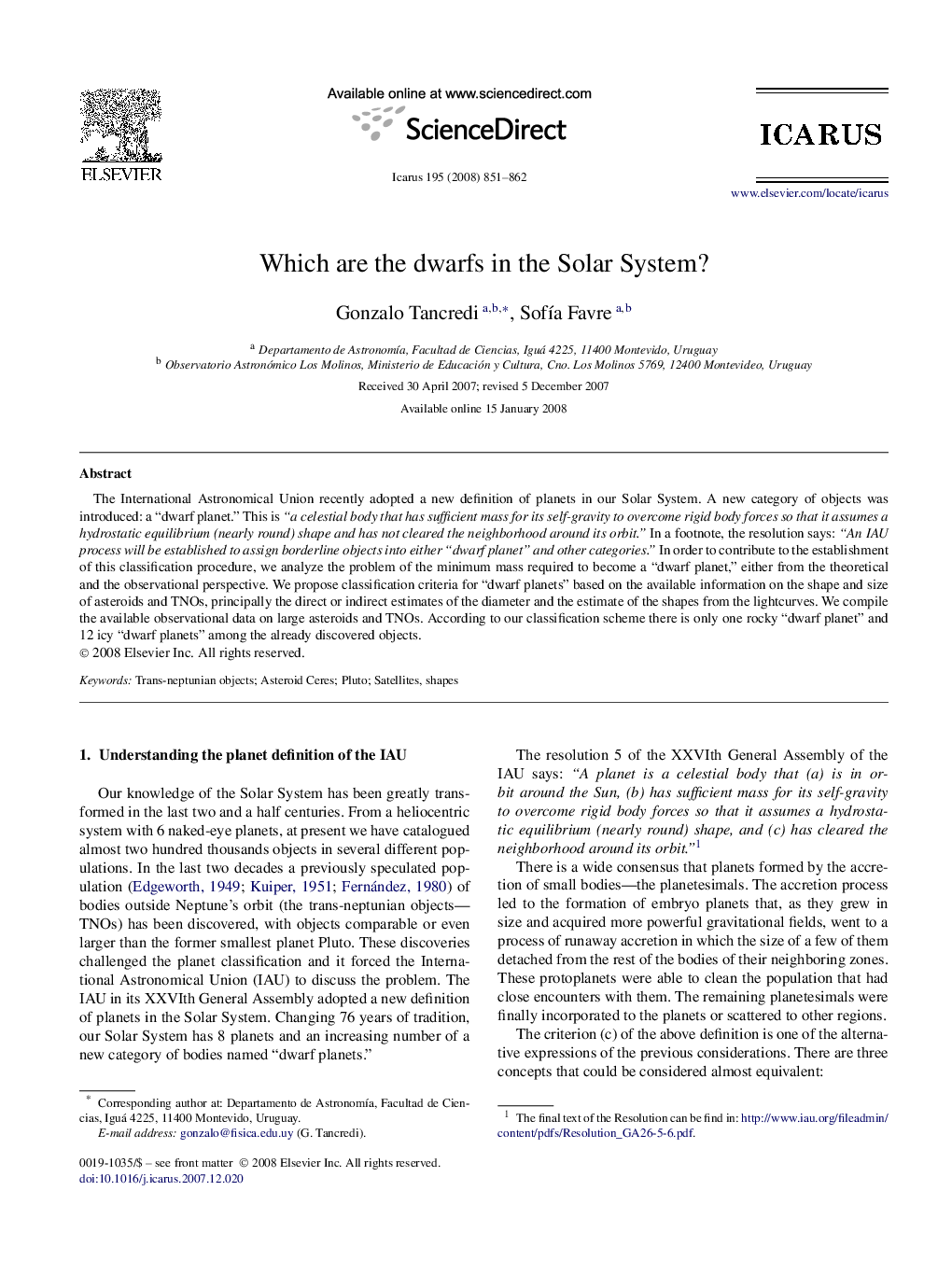| Article ID | Journal | Published Year | Pages | File Type |
|---|---|---|---|---|
| 1774978 | Icarus | 2008 | 12 Pages |
The International Astronomical Union recently adopted a new definition of planets in our Solar System. A new category of objects was introduced: a “dwarf planet.” This is “a celestial body that has sufficient mass for its self-gravity to overcome rigid body forces so that it assumes a hydrostatic equilibrium (nearly round) shape and has not cleared the neighborhood around its orbit.” In a footnote, the resolution says: “An IAU process will be established to assign borderline objects into either “dwarf planet” and other categories." In order to contribute to the establishment of this classification procedure, we analyze the problem of the minimum mass required to become a “dwarf planet,” either from the theoretical and the observational perspective. We propose classification criteria for “dwarf planets” based on the available information on the shape and size of asteroids and TNOs, principally the direct or indirect estimates of the diameter and the estimate of the shapes from the lightcurves. We compile the available observational data on large asteroids and TNOs. According to our classification scheme there is only one rocky “dwarf planet” and 12 icy “dwarf planets” among the already discovered objects.
